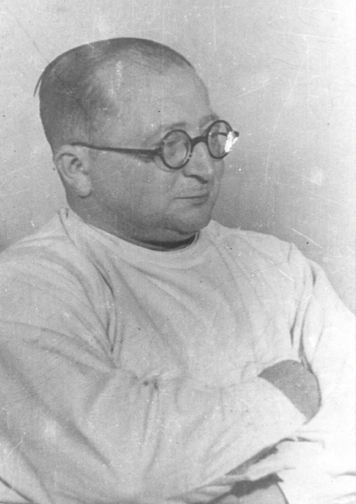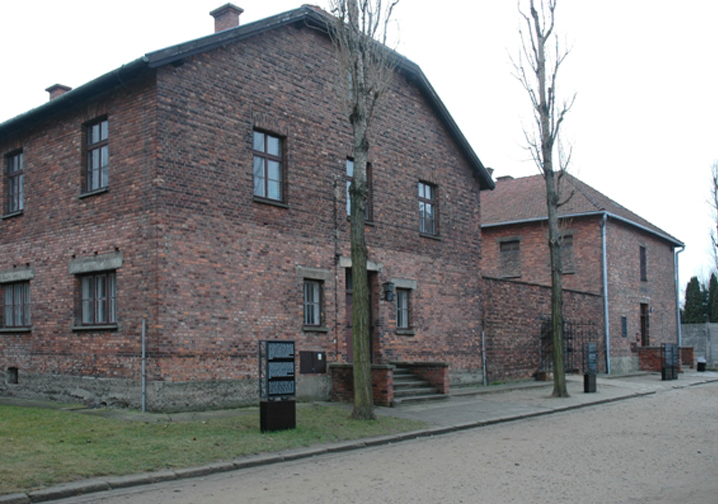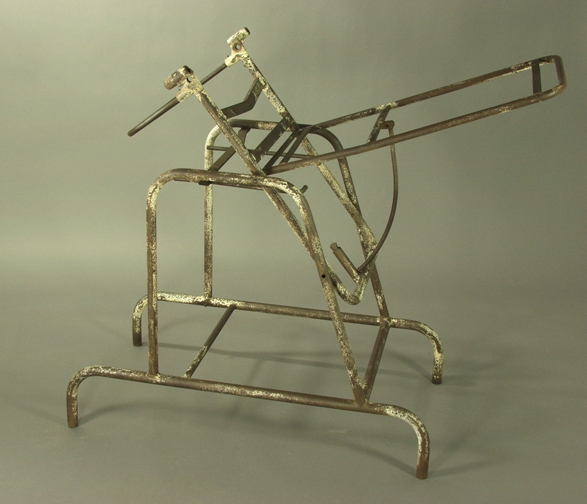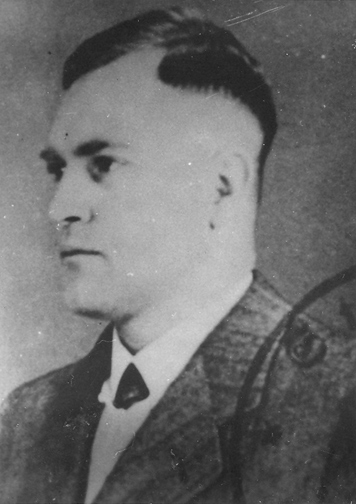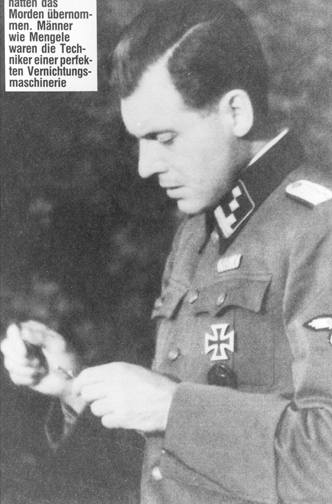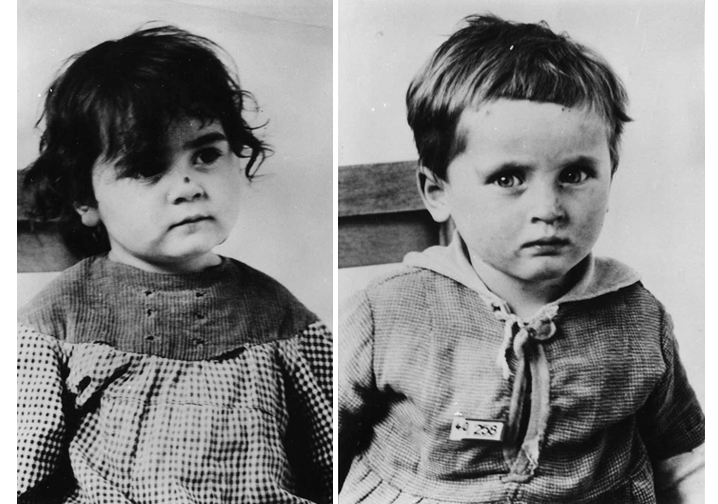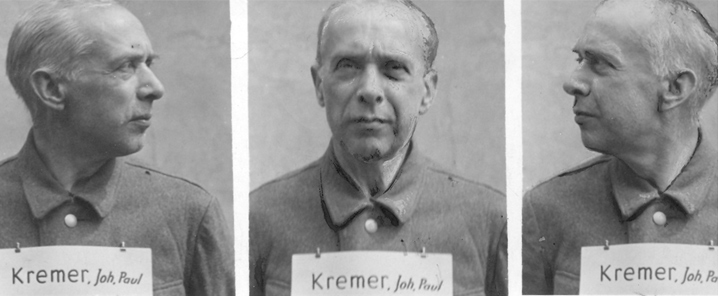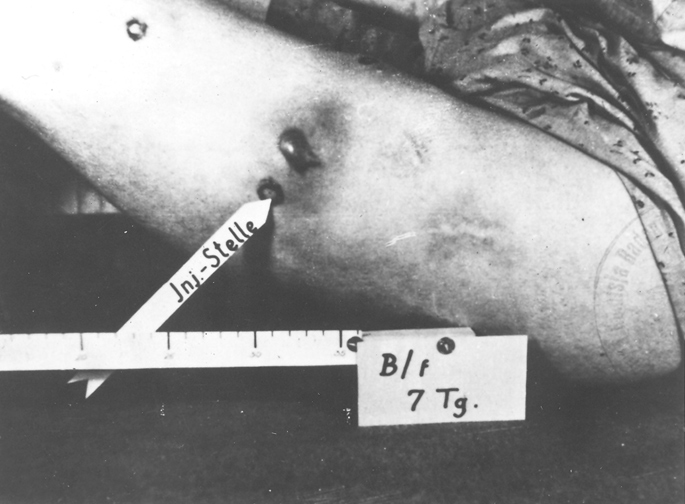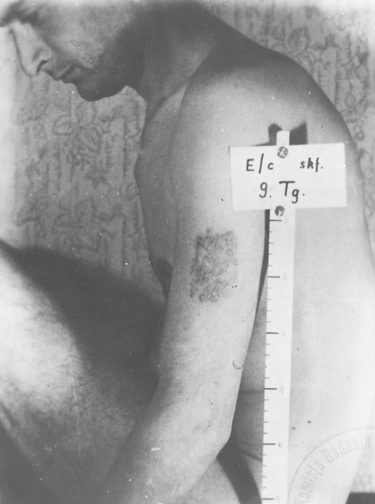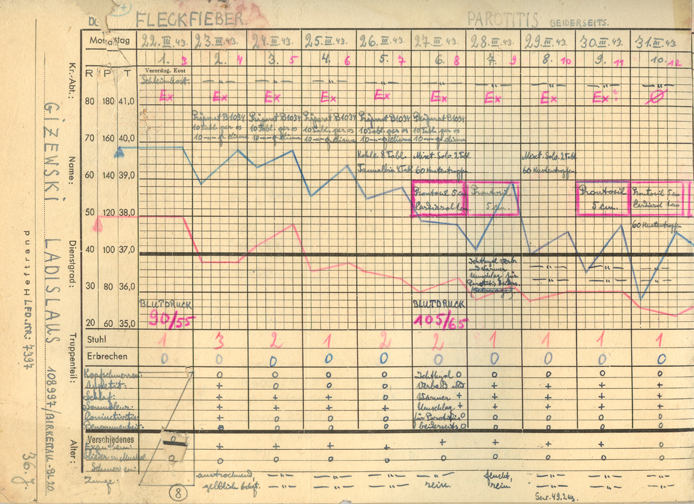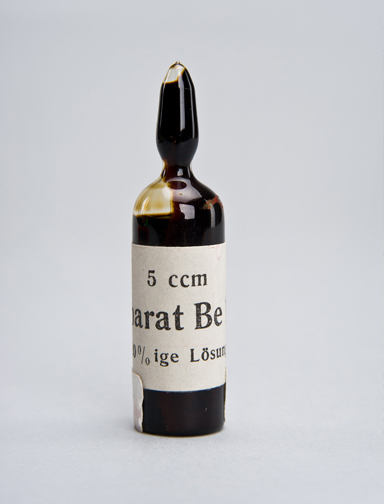They transported me to the Auschwitz camp in June 1944. At the start of August 1944 hunger had caused my legs to swell and as a patient I was put into Block 19 … in Auschwitz. Around 22 August 1944 a committee headed by the camp’s chief physician, Dr Klajs [Klein]came to our Block 19. With them came SS Senior Sergeant Emil Kaszur [Kaschub]. While reviewing the patients, they selected 20, all my age, and sent us to Block 28, where we were put in isolation ward No. 13. Emil Kaschub forbade the SS guards to let us out or have any contact with other people. We were let out of the ward only once every 24 hours to attend to the call of nature. For the rest of the time we had to make do with buckets left for us in the ward. The day after we were sent to ward No. 13, Emil Kaschub, accompanied by prisoner attorney Dr Sztern [Schtern] and Hungarian [prisoner] physician Szwarc [Schwarz], began conducting on us various experiments.
Emil Kaschub personally took each of us and with a special saw removed the surface layer of skin on our calves. Into the wounds of some he rubbed in a paste, and into the wounds of others he rubbed in a liquid. This he did to all 20 of us and next he observed the progressive irritation or contraction of the skin. Every day he took photographs of our wounds and whenever the wounds he needed reached the stage of full decomposition, in all our cases he cut out the affected cells together with the muscle tissue and took them away. Not only I was subjected to these experiments, but also my friends from the camp. …
When taking photographs of our wounds, Emil Kaschub had each of us put on a table. The windows would be covered and he would take the photographs under the light of reflectors. Then he would ask: ‘Does it hurt?’ And we answered that it did, he would respond: ‘But the German soldier has to suffer all sorts of inconveniences for you, you filthy Jews.’
Later Emil Kaschub went to Brussels. During his absence many of us were saved by Dr Schwarz, who treated us intensively. Those who were in a better state he sent to other blocks. But those whom Schwarz was unable to cure, in accordance with camp administration instructions, were sent to the crematorium and burned.

